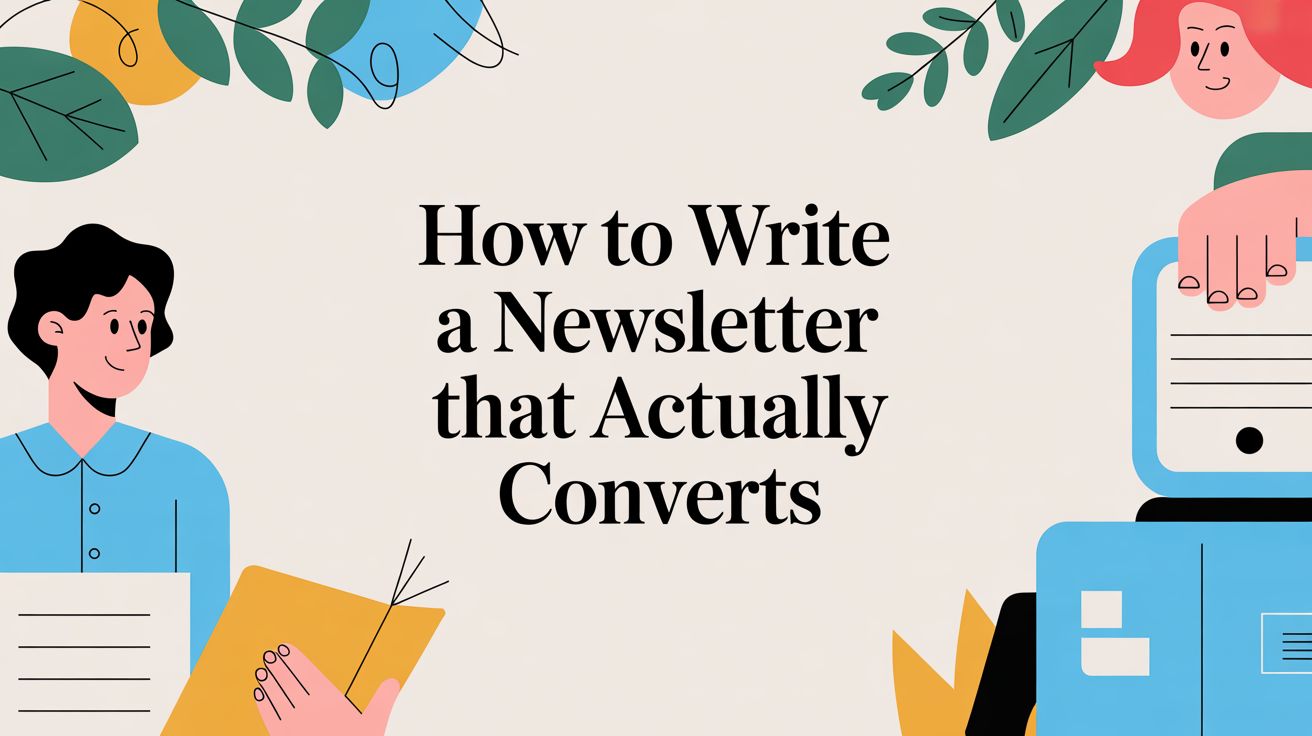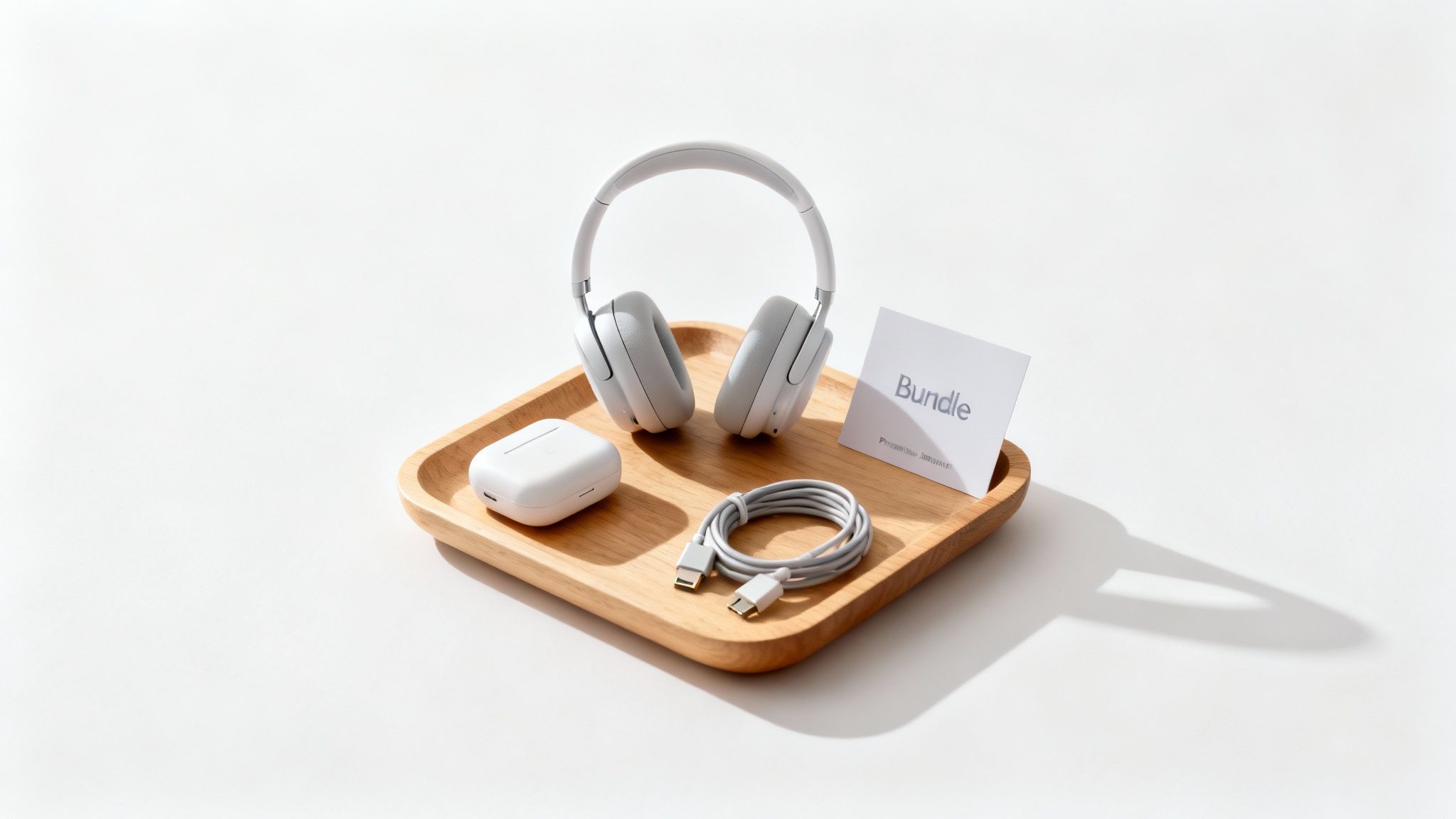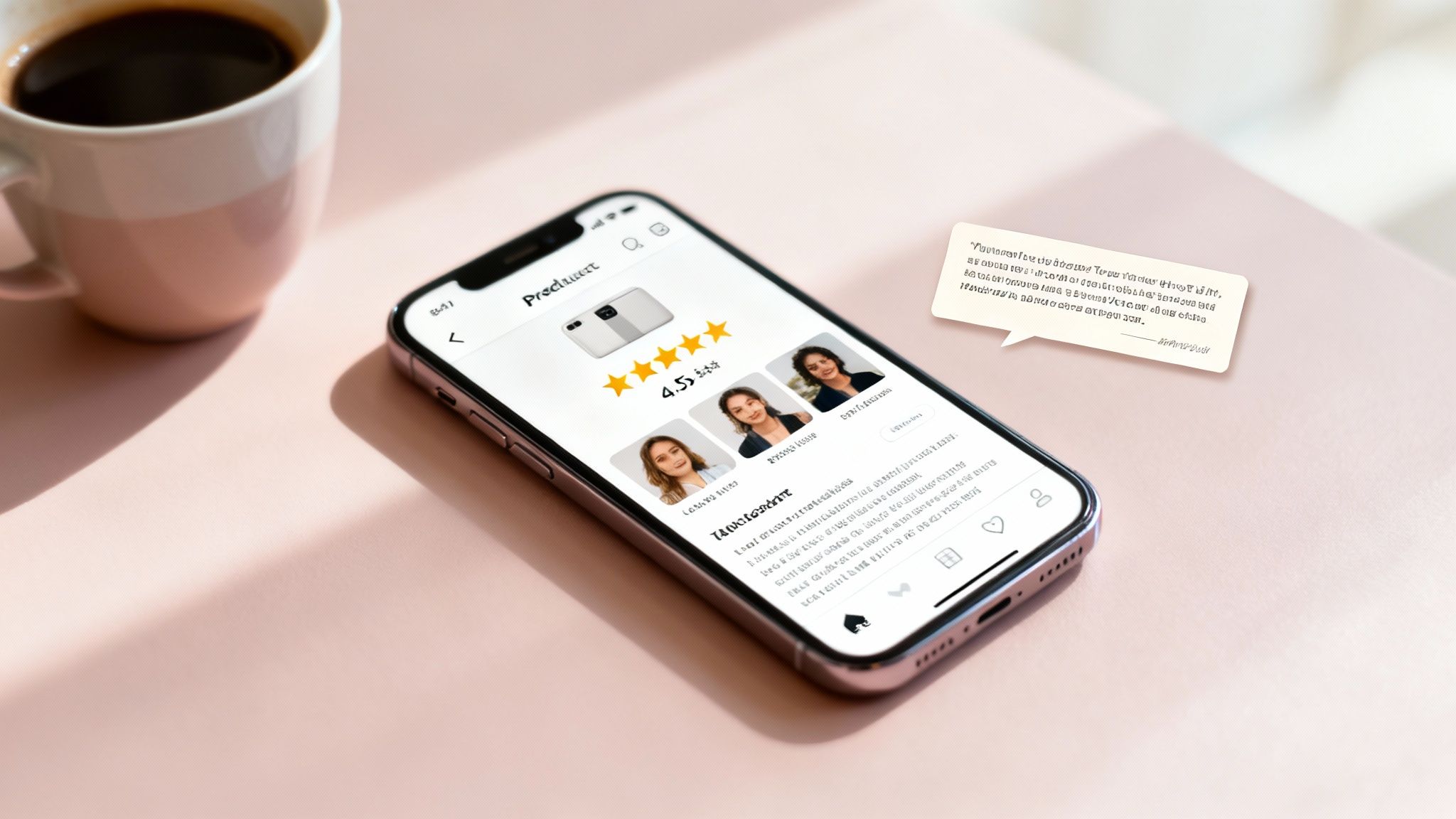
How to Get Sales on Shopify: A Psychology-Backed Guide

You're getting traffic. Your products are great. Your prices are competitive. So why aren't you getting sales? It's the Shopify paradox: 97-98% of your visitors leave without buying, and the average cart abandonment rate is a staggering 70%. The problem isn't your product—it's the lack of urgency and incentive driving the purchase.
Most solutions focus on traffic generation when conversion is the real bottleneck. Pouring more traffic into a store that doesn't convert is like pouring water into a leaky bucket. Before we dive into solutions, let's diagnose exactly why your Shopify store isn't converting.
Why Your Shopify Store Isn't Getting Sales (The Diagnosis)
Problem 1: No Sense of Urgency
The Issue: Generic "20% off" promotions that run forever create no incentive to buy NOW. Customers see the offer, think "I'll come back later," and rarely do.
The Psychology: Without a clear, believable reason to act immediately, the brain defaults to procrastination. Research shows that when discounts are always available, conversion rates can drop by as much as 40%. This is the difference between real vs. fake urgency. An arbitrary countdown timer on a permanent offer doesn't work because customers know it's not real. Real urgency is grounded in verifiable scarcity.
Problem 2: Generic, Non-Compelling Promotions
The Issue: "10% off your first order" is forgettable, easily ignored, and fails to differentiate your brand.
The Psychology: This type of offer lacks any element of competition or social proof. There's no Fear of Missing Out (FOMO). Compare the psychological impact of "Get 10% off" versus "Next 20 buyers get 25% off - only 8 left!" The second option introduces competition and scarcity, two powerful behavioral triggers that drive immediate action.
Problem 3: No Traffic (or the Wrong Traffic)
The Issue: You can't convert visitors you don't have. However, spending money on paid traffic before optimizing your conversion rate is a recipe for burning cash.
The Framework: Remember the simple formula: Traffic × Conversion Rate = Sales. You need to optimize both, but improving your conversion rate first makes every dollar you spend on traffic more effective.
Problem 4: Zero Trust Signals
The Issue: A store without reviews, testimonials, or clear policies feels risky to a new customer.
The Psychology: Social proof is a cognitive shortcut. When we see others have had a positive experience, it reduces our own perceived risk. Quick wins include adding customer reviews, trust badges (secure checkout, etc.), and making your return policies easy to find.
Problem 5: No Lead Nurturing or Email Capture
The Issue: A visitor leaves, and you have no way to bring them back. You've lost them forever.
The 97% Problem: If you don't capture an email or phone number, you are permanently losing contact with 97% of your potential customers. A compelling lead magnet—like exclusive access to a limited-quantity deal—is essential for building an owned audience you can market to later.
Problem 6: Poor Mobile Experience
The Issue: With 60%+ of traffic coming from mobile devices, a clunky mobile site is a conversion killer.
The Quick Check: Can customers easily navigate and complete a checkout on their phone? Do your pages load in under 3 seconds? A poor mobile experience creates friction and leads directly to abandoned carts.
Problem 7: Weak or Non-Existent Calls-to-Action
The Issue: Visitors land on your page and don't know what you want them to do next.
The Psychology: Decision paralysis is a real phenomenon. When faced with too many choices or unclear direction, people often choose to do nothing. Clear, action-driven CTAs (e.g., "Shop Now," "Claim Your Discount") combined with urgency ("Only 5 Left!") guide the user and overcome hesitation.
Leading Ways to Increase Shopify Sales (The Solutions)
Now that we've diagnosed the problems, let's talk about proven tactics to increase sales immediately. These aren't theory—they're backed by behavioral psychology and real merchant data.
1. Create REAL Urgency with Limited-Quantity Promotions
The Concept: Replace the ineffective "20% off all week" with a high-impact "Next 20 orders get 25% off." This isn't just a discount; it's an event.
The Psychology: This tactic directly leverages scarcity (a limited number of discounts available) and competition (other shoppers are trying to get them too). This creates real, verifiable urgency that a fake countdown timer can't replicate. An A/B test proves it: an email with "Next 20 orders get 20% off" drives significantly higher click-through rates and conversions than a generic "20% off" email.
How Quikly Solves This:
- First-to-Buy Rewards: Automate campaigns like, "Next 50 customers get $25 off, then it drops to $15 for the next 100."
- Tiered Limited Quantity: This creates multiple urgency moments in a single campaign, capturing a wider range of customers.
- Real-Time Counters: Display live counters on your site showing the quantity decreasing, amplifying FOMO and providing powerful social proof.
Merchant Benefit: This drives immediate revenue, often within 24 hours, while giving you precise control over your discount budget. It also encourages viral sharing as customers alert friends to a live deal.
Example Campaign: "Black Friday Campaign: First 50 orders get 40% off, next 100 get 30% off, next 200 get 20% off. Watch the tiers drop in real-time." To discover more about crafting these high-impact offers, you can learn more about Shopify promos on hq.quikly.com.
2. Use Time-Based Value Drops to Accelerate Decisions
The Concept: Instead of a static offer, the value of the discount decreases over a short period. For example, "The offer starts at 30% off, drops to 20% after 2 hours, then 10% after 4 hours."
The Psychology: This leverages the principle of loss aversion. Behavioral economics research shows that the pain of losing something is psychologically twice as powerful as the pleasure of gaining something of equal value. Customers are motivated to act quickly to avoid losing the better deal.
How Quikly Solves This:
- Automated Value Drops: The platform handles the mechanics of decreasing the discount automatically over your specified timeline.
- Email/SMS Notifications: Send automated alerts like, "Your 30% discount drops to 20% in 30 minutes!" to re-engage shoppers and create multiple purchase windows.
Merchant Benefit: This strategy captures both impulse buyers who want the best deal and procrastinators who act at the last minute. It also protects profit margins since not everyone receives the maximum discount.
3. Target High-Intent Segments with Precision
The Concept: Not all customers are equal. Segment your audience by behavior and value to maximize both revenue and margin.
The Psychology: Personalization and exclusivity make customers feel valued. Offering a better deal to a VIP customer or someone with a high-value cart reinforces their positive relationship with your brand.
How Quikly Solves This:
- AOV Targeting: Offer a better discount tier to customers with carts over $100.
- Order Volume Targeting: Reward repeat customers with exclusive access to your best limited-quantity deals.
- Specific Inventory Targeting: Need to clear out last season's stock? Create a high-urgency, limited-quantity campaign targeted only at those specific products, protecting margins on your bestsellers.
Merchant Benefit: This allows you to move stale inventory strategically, build powerful VIP loyalty, and maximize revenue without resorting to site-wide, margin-crushing discounts.
4. Deploy Exit-Intent Popups with Compelling Offers
The Concept: Capture abandoning visitors with a last-chance offer. But instead of a generic popup, make the offer competitive and urgent. This is a critical tool, considering 70% of carts are abandoned.
The Psychology: This interrupts the pattern of abandonment and re-engages the visitor by introducing a new, compelling variable—scarcity and competition.
How Quikly Enhances This:
- Advanced Behavioral Triggers: Instead of just a basic "Get 10% off," Quikly's exit-intent popups can display a message like, "You're customer #3 in line—claim your spot for 25% off (only 12 spots left!)."
- Immediate Revenue, Not Just Email Capture: While most popups focus on capturing an email, this approach focuses on converting the sale immediately, generating revenue from traffic that would have been lost.
Merchant Benefit: Recover 10-15% of abandoning visitors, grow your email list with high-intent leads who are ready to buy, and see an immediate impact on your daily sales. For more on this, learn more about cart abandonment strategies for Shopify.
5. Build and Nurture Your Email & SMS List
The Concept: With 97% of visitors leaving without buying, your email and SMS lists are your most valuable assets. They are your owned channels, immune to rising ad costs. But capturing that contact information requires a compelling incentive.
The Psychology: Reciprocity. By offering genuine, time-sensitive value upfront (e.g., a chance to get a great deal), customers are far more likely to give you their contact information in return.
How Quikly Enhances Email Capture:
- Gamified Lead Capture: Use spin-to-win wheels with tiered, limited-quantity prizes to make email signup fun and urgent.
- Exclusive Early Access: Offer your email/SMS list first dibs on your best limited-quantity campaigns, making your list a valuable VIP club.
- SMS Urgency: Drive immediate action with texts like, "Last 10 spots for 30% off—text SAVE to claim your code now!"
Merchant Benefit: Building an owned audience dramatically lowers your Customer Acquisition Cost (CAC) over time. You can re-engage traffic you've already paid for and build long-term customer relationships.

6. Drive Traffic from Multiple Channels (Once Conversion is Optimized)
The Concept: Once your store is optimized to convert, it's time to pour fuel on the fire. A multi-channel traffic strategy ensures you're reaching customers wherever they are.
The Psychology: Urgency-based offers are inherently shareable and perform better in paid channels. They provide a clear, compelling reason to click now.
How Quikly Amplifies Traffic:
- Paid Ad Optimization: Ad creative that says "Next 20 orders get 40% off" will have a much higher click-through rate (CTR) than a generic discount ad.
- Viral Mechanics: Limited-quantity deals that feel like a "win" get shared organically on social media, generating free traffic.
- Influencer Activation: Give influencers unique, limited-quantity codes for their audiences. This creates an authentic event that drives immediate sales.
7. Optimize for Mobile
The Concept: Over 60% of your traffic is on mobile. If the experience isn't seamless, you're losing sales. Full stop.
The Psychology: Cognitive ease. A smooth, fast, and intuitive mobile experience reduces friction and makes it easy for the customer to say "yes."
Quick Wins:
- Ensure any banners, popups, and offers are fully mobile-responsive. Quikly campaigns are mobile-optimized by default.
- Enable one-click checkout options like Shop Pay or Apple Pay.
- Leverage SMS as your primary mobile communication channel for urgent offers.

8. Leverage Social Proof and Trust Signals
The Concept: Reviews, testimonials, and trust badges reduce purchase anxiety. When combined with urgency, their effect is amplified.
The Psychology: Social Proof. We trust the actions of the crowd. Seeing that others are buying validates our own decision and reduces hesitation.
How Quikly Enhances Social Proof:
- Real-Time Counters: Combining "Only 7 spots left for this deal" with "23 people bought in the last hour" is a powerful psychological one-two punch.
- Social Sharing: Customers are more likely to share when they feel they've "won" a special, limited-quantity deal, creating user-generated social proof.
For more on building trust through owned channels, explore a guide to email marketing best practices. And to get inspiration for building your own program, you can discover loyalty program ideas from top brands on hq.quikly.com or explore more about strategic Shopify promos.
Putting It All Together: The Quikly Strategy
The path to getting consistent sales on Shopify isn't about finding one magic bullet; it's about implementing a system grounded in behavioral science.
The Framework:
- Start with conversion optimization, not traffic generation.
- Create real urgency through limited-quantity and time-based mechanics.
- Capture and nurture an owned audience via email and SMS.
- Target strategically based on AOV, customer behavior, and inventory needs to protect margins.
- Amplify with paid and organic traffic once your conversion engine is running.
The Quikly Difference:
This is a shift from basic tactics to sophisticated strategy.
- Not just email capture, but immediate revenue generation.
- Not just discounts, but behavioral psychology that drives action.
- Not just manual campaigns, but an automated system for consistent sales acceleration.
Merchants using this framework see a revenue lift within 24 hours of launching a campaign, not just an increase in email signups. The average campaign drives a 10-15% increase in revenue, and customers return for future urgency "moments," boosting repeat engagement.
Conclusion & CTA
Getting sales on Shopify isn't about having the best product alone—it's about converting the traffic you have. Generic promotions don't work anymore. Modern consumers are immune to fake urgency; they need real scarcity, competition, and a compelling reason to act now. By focusing on conversion first and then scaling traffic, you build a sustainable and profitable ecommerce business.
Ready to turn your traffic into revenue? Quikly's urgency-based campaigns drive immediate sales through limited-quantity promotions, time-based value drops, and precision targeting. Stop losing 97% of your visitors—start converting them today.

The Quikly Content Team brings together urgency marketing experts, consumer psychologists, and data analysts who've helped power promotional campaigns since 2012. Drawing from our platform's 70M+ consumer interactions and thousands of successful campaigns, we share evidence-based insights that help brands create promotions that convert.
